Story of Day :
Papaya plants belong to the Caricaceae family; This family has four genera, namely: Carica, Jarilla, Jacaratia, and Cylicomorphia.
The first three genera are plants originating from tropical America, while the genus Cylicomorpha is a plant from tropical Africa.
The genus Carica has 21 types of plants; the fruit is delicious to eat and widely cultivated. In contrast, other genera are only common to enjoy the beauty of their habitus.
This article will help you learn more about growing papaya trees and the best way to care for them. Papaya trees (Carica papaya L.) are grown in the tropics of Mexico and Central America.
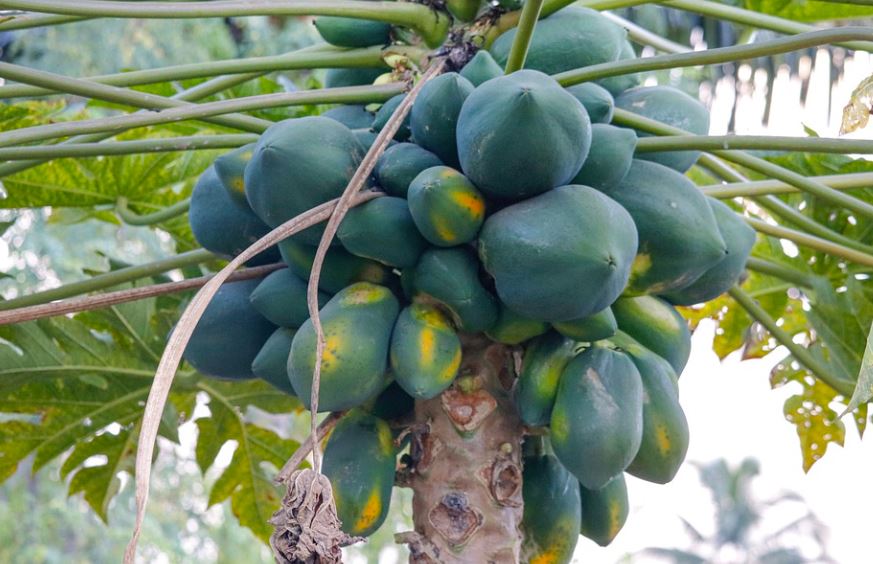
In the U.S., they are also grown in Texas, California, Hawaii, Arizona, and Florida under subtropical climate conditions.
Major countries producing them include India (to name but one), Dominican Republic, Brazil, and Mexico among others.
Papaya is known for its great taste, high nutritional value, and medicinal properties. It’s easy to grow, so let’s check out how to do it!
The USDA zones range from 9 to 11, and the difficulty is easy.
Papaya other Names:
- Banane de Prairie
- Caricae Papayae Folium
- Carica papaya
- Carica peltata
- Carica posoposa
- Chirbhit
- Erandachirbhita
- Erand Karkati
- Green Papaya
- Mamaerie
- Melonenbaumblaetter
- Melon Tree
- Papaw
- Pawpaw
- Papaya Fruit
- Papayas
- Papaye
- Papaye Verte
- Papayer
- Papita
Contents
- 1 Papaya Plant Use
- 2 Papaya Tree Information
- 3 Papaya Tree Pollination & Propagation
- 4 How to Grow Papaya tree in Pots
- 5 Choosing a Container
- 6 Growing Papaya from Seeds
- 7 Planting Papaya Tree
- 8 Growing a Papaya Tree in a Cold Climate
- 9 Requirements for Growing Papaya Tree
- 10 Papaya Tree Care
- 11 Harvesting Papayas
Papaya Plant Use
As Food Ingredients for Fresh Fruits and Vegetables

Papaya fruit is a popular fruit. Known and loved by almost all residents in the hemisphere.
In the Hawaiian islands, this plant finds its fans; Papaya fruit as a table fruit is widely requested and eaten in the morning.
Papaya fruit has become an essential part of the Continental breakfast menu. Many Americans consider papaya a Hawaiian island fruit.
Papaya fruit has flesh that tastes sweet and refreshing. Can relieve thirst. Its nutritional value is relatively high because it contains many vitamins and minerals.
In Asia, such as Indonesia, young papaya fruit and leaves are pretty popular as an ingredient in vegetables or other dishes.
In the Philippines, pickled young papaya fruit called Achara is quite popular on the daily menu.
In addition to fresh fruit, papaya fruit can be made as sweets, fruit in syrup, sauces, and so on. In traditional medicine, parts of the papaya plant are also widely used.
Benefits of Papaya in Industries
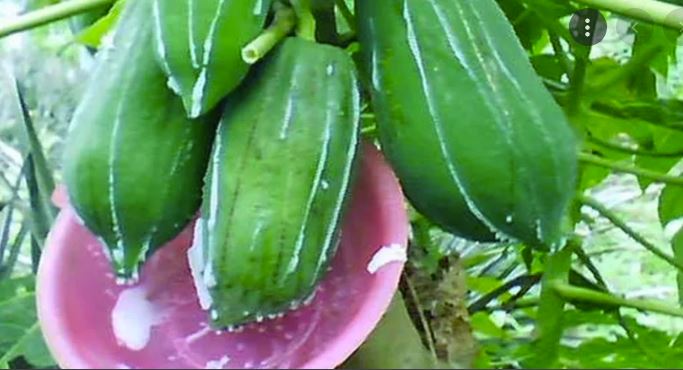
Stems, leaves, and young papaya fruit contain white latex. This sap contains a protein-breaking enzyme or proteolytic enzyme called papain.
Papain is an enzyme widely used in pharmaceuticals, cosmetics, textile, tanning, and so on.
As a commodity in the world market, papain is sought after by many people. The market is mainly in America, England, Belgium, the Netherlands, and so on.
Utilizing papaya for papain should be accompanied by using fruit and other parts as food ingredients.
Papaya Tree Information
Papaya is a plant of rapid growth and a short life span. This is why it’s not commercially profitable to cultivate mature papaya trees for more than 3 years because the fruit yield gets low after that.
The tree has a single stem without branches and many large leaves that are ornamental. The plant can grow up to 6-20 feet in height and has a shallow root system, making it a perfect choice for container growing.
Fruit comes in many different forms, such as shapes and sizes. Depending on the cultivar and type of flower, fruit can vary greatly from each other.
Papaya Tree Pollination & Propagation

If you’re growing papayas, there are three sexes: male, female and hermaphrodite. Trees that are male should be eliminated because they do not produce fruit; female trees require male trees for pollination.
In orchards and plantations generally, 1 male tree per 10 females is grown to ensure fertilization.
Hermaphrodite papaya trees are self-pollinating, which means they do not require male plants to pollinate.
Many commercial growers plant them! If you’re planting papayas, you will need to have either female or self-pollinating papaya trees to harvest fruits.
Hermaphrodite, self-pollinating papaya trees are plant species that don’t require males for pollination. In many commercial horticulture farms, these plants are used!
To harvest fruit from your papayas, you will need either female or self-pollinating trees.
Buying seeds from a quality source is a better option. This way, you’ll know what you’re buying and can have a self-fertile, bisexual tree.
If you’re not interested in germinating seeds, buy young papaya plants from a nursery instead. Many sellers ship them.
Or, if you have collected seeds yourself during gardening or consuming fruit in your diet, choose elongated fruits instead of round ones: they’re 66% hermaphrodite and 33% female.
If you are sowing extracted seedlings (from fruit) use those with an elongated shape.
Tip: The pollination of female papaya trees requires cross-pollination from hand.
Also, read about how to identify male, female, or hermaphrodite papaya trees.
How to Grow Papaya tree in Pots

Papaya trees are short, and they require to be grown in pots. They live a short life span of about four years which makes it difficult for them to grow up tall.
You can choose from various papaya varieties because each one has a different taste, texture, or size! Hawaiian papayas are considerably smaller than their Mexican counterparts and rarely grow taller than 8-10ft!
Searching for dwarf cultivars is easy on the internet, and you can find those that are ideal for your region.
Also, read about what is urban farming.
Choosing a Container

You’ll need a big container to grow papaya plants in pots. 15-20 gallons would be enough, and there should be plenty of drainage holes on the bottom before planting the plant.
An 18-22 inch diameter pot or barrel/bucket works for this as well if you can get one that is bigger than 16 inches deep. If not, smaller containers are fine too – old drums, barrels or buckets work just fine too!
Sow the seeds in the pot you intend to use for growing papaya later. Other growing requirements are given in the article below.
Also, read about how to grow dragon fruit plants from cuttings.
Growing Papaya from Seeds

Seeds need to be cleaned before sowing. The first way is to just wash the seeds and go into step five below. The other option is for 4 days of soaking in a container full of water, changing it twice a day.
After 2 days, you should separate the seeds that are floating on top from those that sank down; this will ensure proper germination!
If a papaya seed has fallen to the bottom, leave it there and remove any floating seeds. You’ll have a better chance of growing healthy fruit this way! To combat fungus on the last day, add fungicides before changing out your water.
After this process, seeds should be kept moist on a cotton cloth for 2 days. Once the white dot appears in them, they are ready to sow directly into the soil or into seed pots.
Sow the seeds directly on the ground or in the container. Because papaya trees do not transplant well, ensure sure your seed pots are biodegradable if you are using pots.
We recommend germination periods of 1-3 weeks to be safe, but the timing can take up to 5 weeks in less ideal conditions. The optimum temperature for seed germination is 20 C (70 F).
Planting Papaya Tree
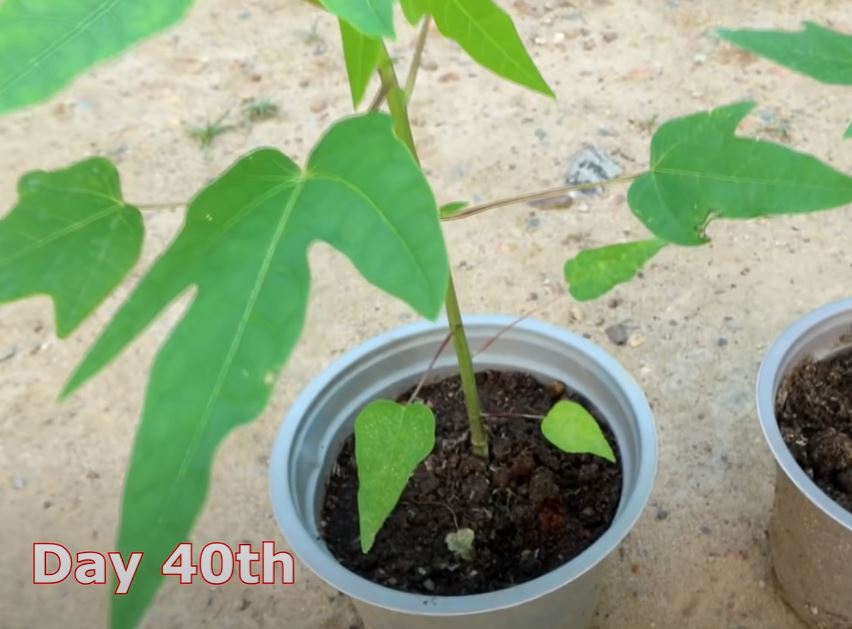
Prepare your planting site with well-drained soil that is of the same depth as the rootball. Digging twice wide will allow for more oxygen to enter into roots, improving their chances and minimizing any chance of rotting.
Dig a hole that is equal to the size of its rootball and twice as wide-clear away any unwanted materials from it.
Prepare sowing ground for nursery plants by clearing out all old roots or other unwanted works in them.
Apply slow-release 16/48/0, 18/46/0, or balanced 15/15/15 fertilizer according to the product’s instructions but in a weaker dose at the base of the hole.
Fill the holes with some soil to prevent roots from coming in direct contact. After transplanting, be sure to apply a fungicide for greater protection especially if planting during rainy days.
Growing a Papaya Tree in a Cold Climate
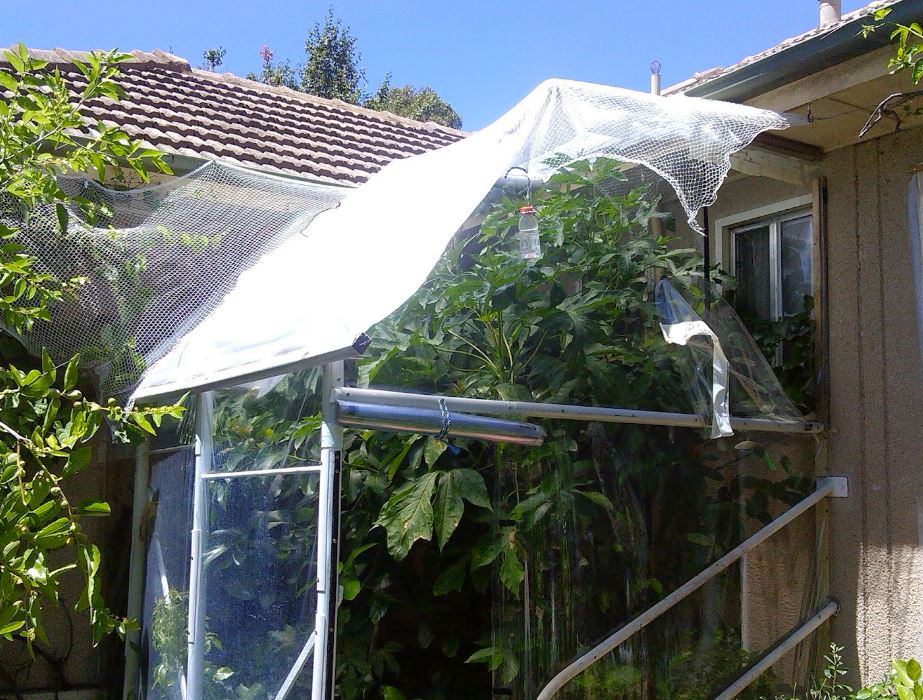
Planting papaya in the wintertime is possible, but you need to take some extra steps. You should plant it in a large container or greenhouse and then try to overwinter it well-protected from cold weather.
You can start your papaya seeds indoors in the fall or early spring, and watch them grow as you wait for frosty weather.
The plants may not be harvested until later, but there is a chance of getting some delicious fruits when the darn thing finally flowers after all that waiting.
Even if you don’t get any fruit on this endeavor it’s still worth it because these plants are beautiful!
If you don’t have a greenhouse in the winter, keep it indoors and cover it with bubble wrap. You can reduce watering daily and stop fertilizing during this time as well.
Requirements for Growing Papaya Tree
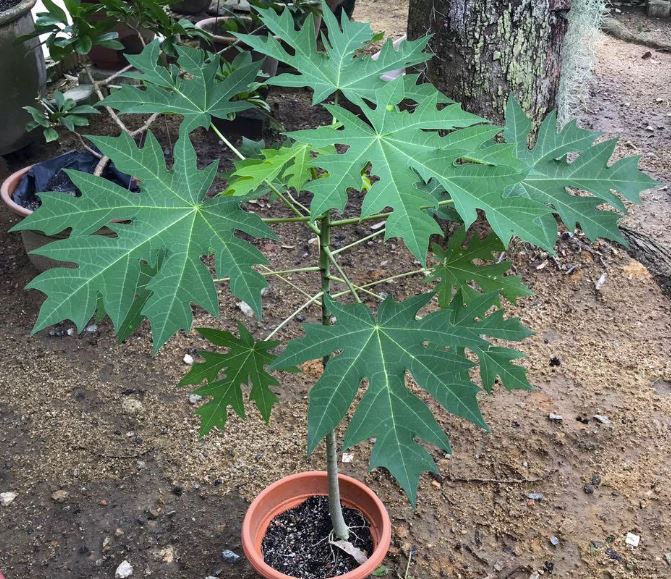
Location
The papaya is a fruit that needs plenty of sunlight because it has high photosynthetic activity. It can’t grow in the lack of light, and you must choose where to plant your trees carefully – they’re not strong enough to withstand windy conditions.
Soil
Soil preparation is key to growing a papaya tree. Deep plowing and mixing in organic matter are the main characteristics of soil for this plant:
- Loose, Moist, and Fertile.
- Good Drainage.
- High Organic Matter Content with a pH level of 5.5 to 7 (Neutral).
The ideal growing medium must be loamy, have adequate moisture retention capacity, and also possess efficient drainage to help with root development. The depth of the soil is also a factor that needs consideration as this will affect how deep roots can grow.
Soils that are more than a meter deep are suitable for growing papaya. Compact soil should be avoided, and the rocks or other debris must be removed before planting to allow good drainage.
Clay soils have greater benefits in developing roots of plants like papaya; however, silt is mixed with sand which creates a perfect environment for these seeds as well!
Sandy soils are good for water retention, but too sandy soil that is low in organic matter will not hold a lot of moisture. Sandy soils with proper drainage must be avoided.
Clay-rich soils lead to slow water movement and root rot, which can stop plant development. Alkalinity in the soil (above pH level 8) can cause micro-element deficiency such as zinc, iron, and other nutrients that are needed for plant health.
Watering
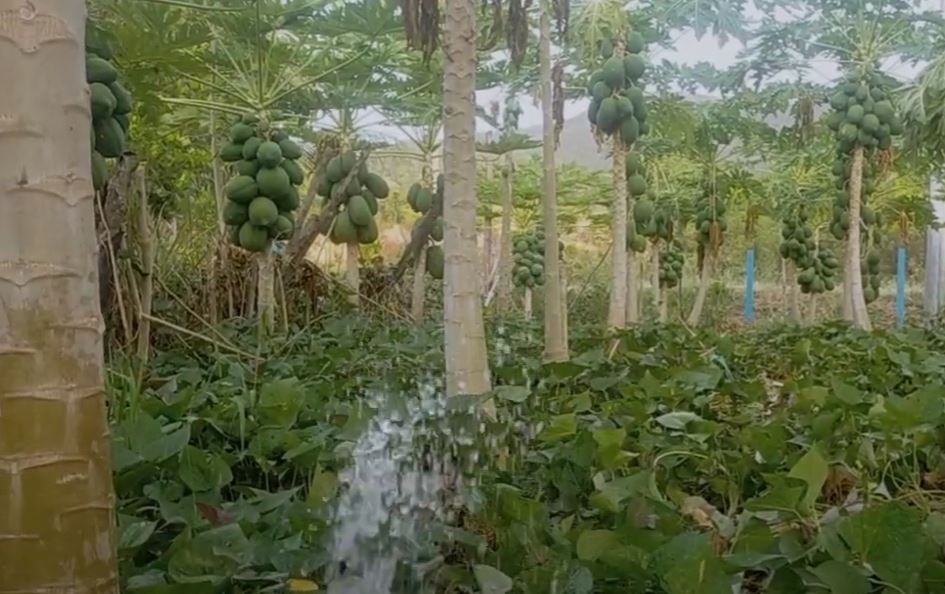
The main contributor to the plant is water. In the early stages of germination, papaya needs a lot for its growth and formative development.
Increasing watering in the dry season can make a big difference for papaya plants. The first layer of soil should be kept slightly moist, but not wet at all times.
As a general rule, water deeply when the top inch dries out so that excess water does not cause yellowing leaves or premature fall of flowers and roots rot.
Low moisture levels could affect plant growth rates and cause elder leaves to age too quickly, as well as fruit drop before it’s ripe.
Papaya roots are sensitive to stagnant water; the roots can rot because of it. If the plant is waterlogged for 2-3 days, the consequences will be fatal. Plants can die.
Therefore, drainage and regulation of excessive water disposal are absolutely necessary for papaya plants.
Spacing
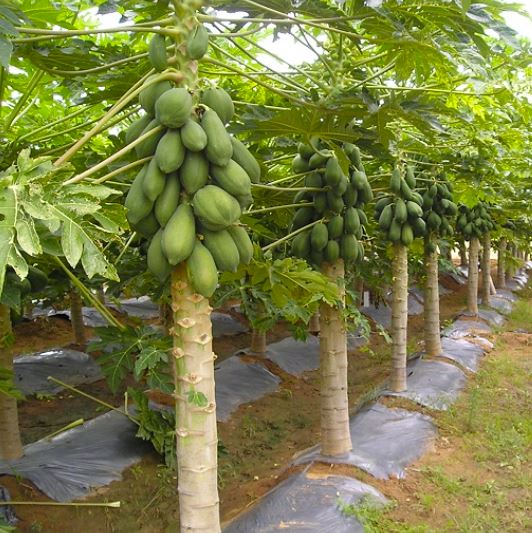
Papaya trees should be planted at least 8 – 10 feet apart from one another!
Temperature Tolerance
It is key for the plant to have a temperature that it can grow in, but too much or too little will stunt growth. Papaya thrives best at temperatures of 68-90 F (20-32 C), with optimal conditions being between these two ranges.
The temperature of 15 C is the minimum temperature for papaya growth.
The papaya tree can bear cold temperatures down to 32 F (0 C) for a short period of time. In hot climates, it can tolerate temperatures above 100 F (38 C).
But due to extreme temperatures above a hundred Fahrenheit, heatwaves, and drought, flower buds fall, and the plant suspends its growth.
The papaya tree’s ability to bear cold temperatures (32 F) is affected by high heat waves. In hot (above a hundred Fahrenheit), arid climates the plant can’t tolerate the temperature and stops growing.
The flower buds fall because of this and it suspends their growth until conditions improve again.
Papaya Tree Care
Papaya trees thrive in warm conditions, needing full sun and regular watering:
Humidity
Papaya growth requires high humidity. Young plants need higher humidity than mature plants. Good plant growth will produce regular and productive flowering and fruiting.
Therefore, soil moisture must always be controlled throughout the year.
Mulching
Organic matter can be used to mulch a papaya tree, which will help retain some moisture in these hot climates. It also helps from getting too cold or too warm.
Fertilizer
Papaya plants absolutely need to be fertilized; fertilization is very helpful for growth and good fruit production.
Even when the plant is 0-4 months old, it is a critical period for the plant. This means that if plants aged 0-4 months do not receive proper fertilizing care, then further growth is difficult to improve, even if the plants are given good fertilizer.
Papaya plants are heavy feeders.
Apply long-lasting fertilizer such as manure or compost regularly with a sprinkle of complete fertilizer like 15-15-15 to the base of your plant. You can also apply it at intervals of two weeks during the first six months and 0.2 kg after that!
When choosing pots for your plants, you have two options. You can opt for liquid or slow-release balanced fertilizers.
Also, read about Kind of Fertilizer For Papaya.
Pruning
No pruning is required!
Pests and Diseases
Fruit flies, mites, black vine weevil, aphids, and whitefly can attack this plant; fungus also threatens it.
Also, read about How To Get Rid of Papaya Pests and Diseases.
Harvesting Papayas

Papaya fruits are harvested 9-12 months after planting. They are sensitive to sunburn and should be picked carefully with gloves or other similar tools.
The fruit is then cut from the stalk leaving a 0.5 cm stub for each fruit harvested, except for those which will not ripen until later in the season (when allowed